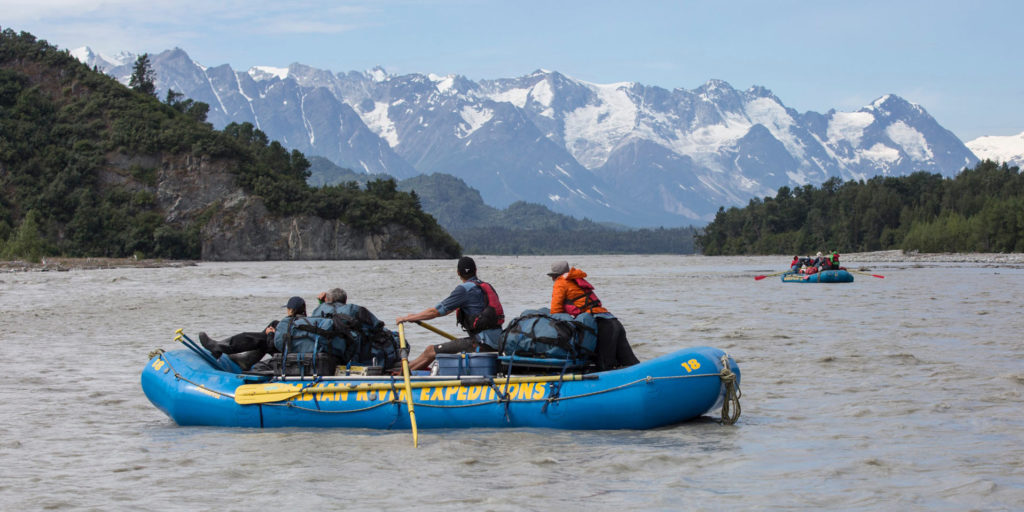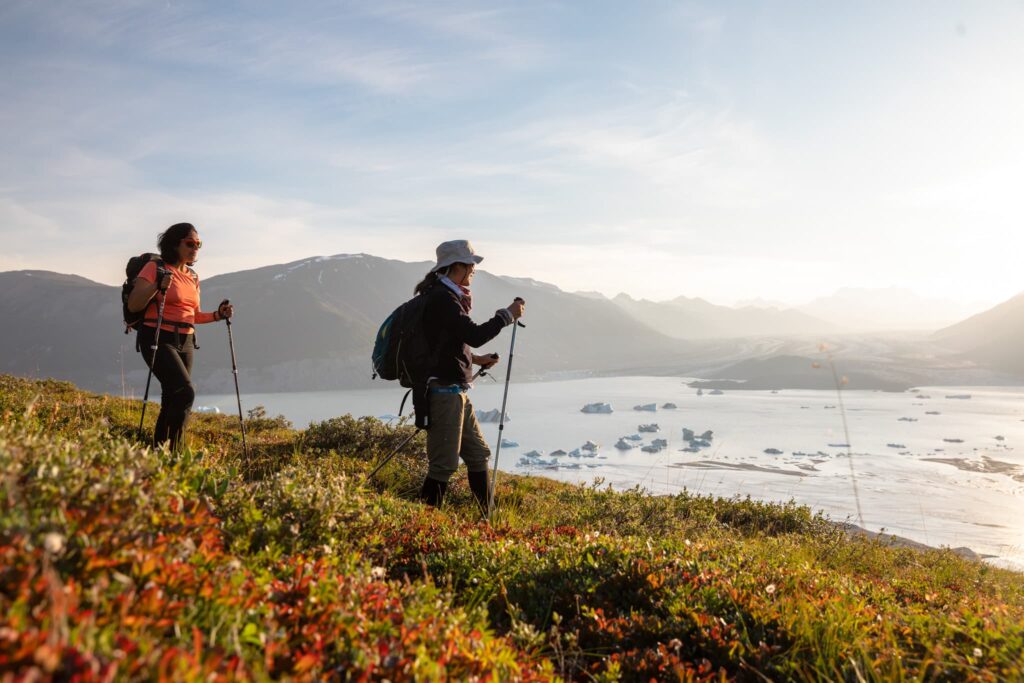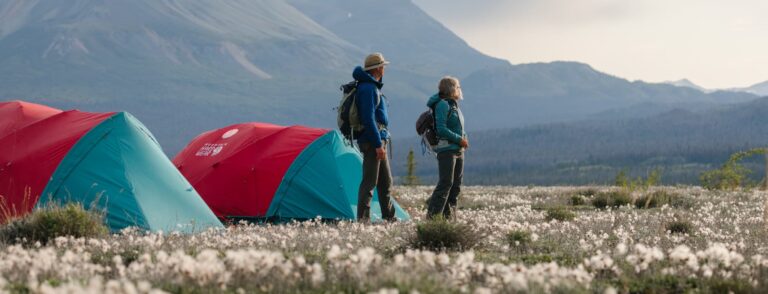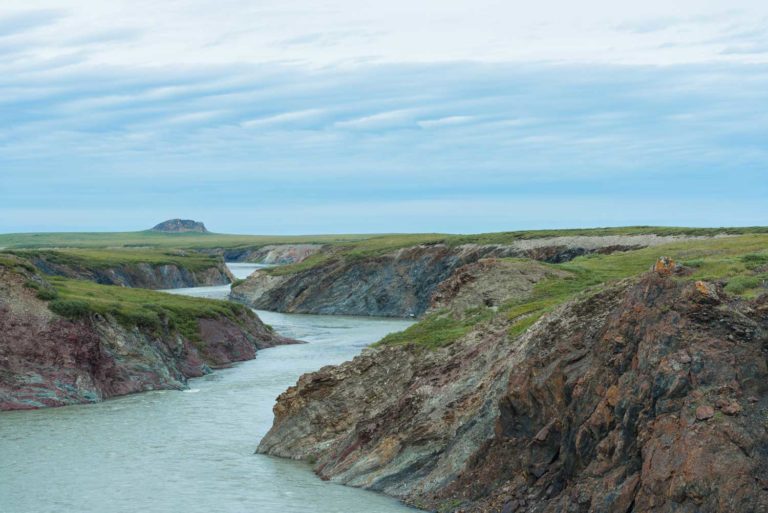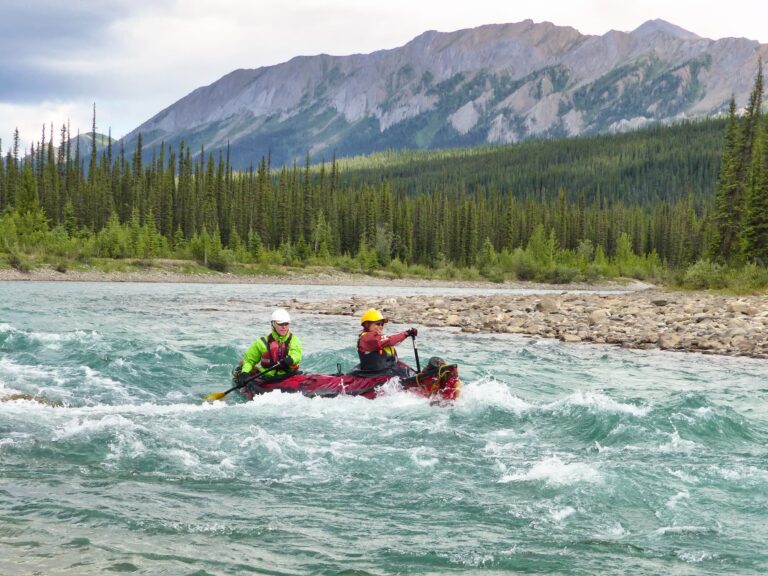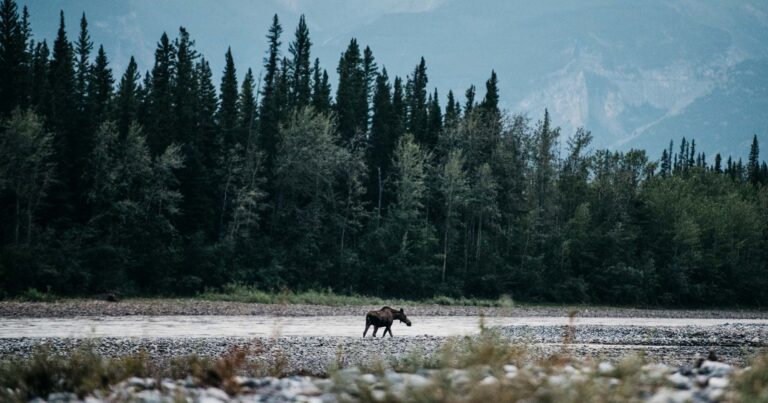The Nahanni’s serene waters mirror the fiery hues of birches come autumn. As much a symbol of nature’s artistry as of indigenous heritage, the birch tree serves both as a canvas for Dene craftsmanship and a wellspring of natural remedies.
Feet outstretched, you lean back in your seat as the afternoon sun glints on the green-grey water. Save for the occasional dip of an oar in the water, all around you is still. A light breeze drifts up the river valley, awakening the birch trees on shore and causing these majestic beauties to sway while their leaves ruffle softly.
The Nahanni is home to multiple varieties of birch. Betula glandulosa (dwarf birch) is found in the alpine in the Nahanni’s headwaters as well as around Virginia Falls (Nailicho). The leaves of this shrub turn a brilliant, shimmering copper colour in late August, setting fire to alpine slopes and the trail that leads to the viewpoints at the falls. Betula papyrifera (white birch) is found on the shores of the Nahanni and turns the forest a brilliant gold in autumn.
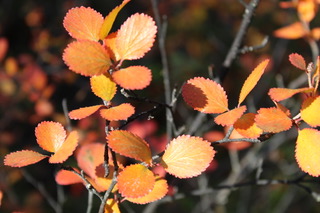
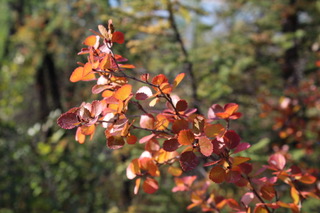
The Dene name for birch is K’i, and they’ve used the outer bark of birch for countless generations to fashion baskets, platters, boxes and cups used for collecting berries and other purposes. This tradition remains strong in the community of Fort Liard, located a short distance above the confluence of the Nahanni and Liard rivers. Gorgeous baskets are meticulously crafted from birch bark and decorated with dyes and porcupine quills.
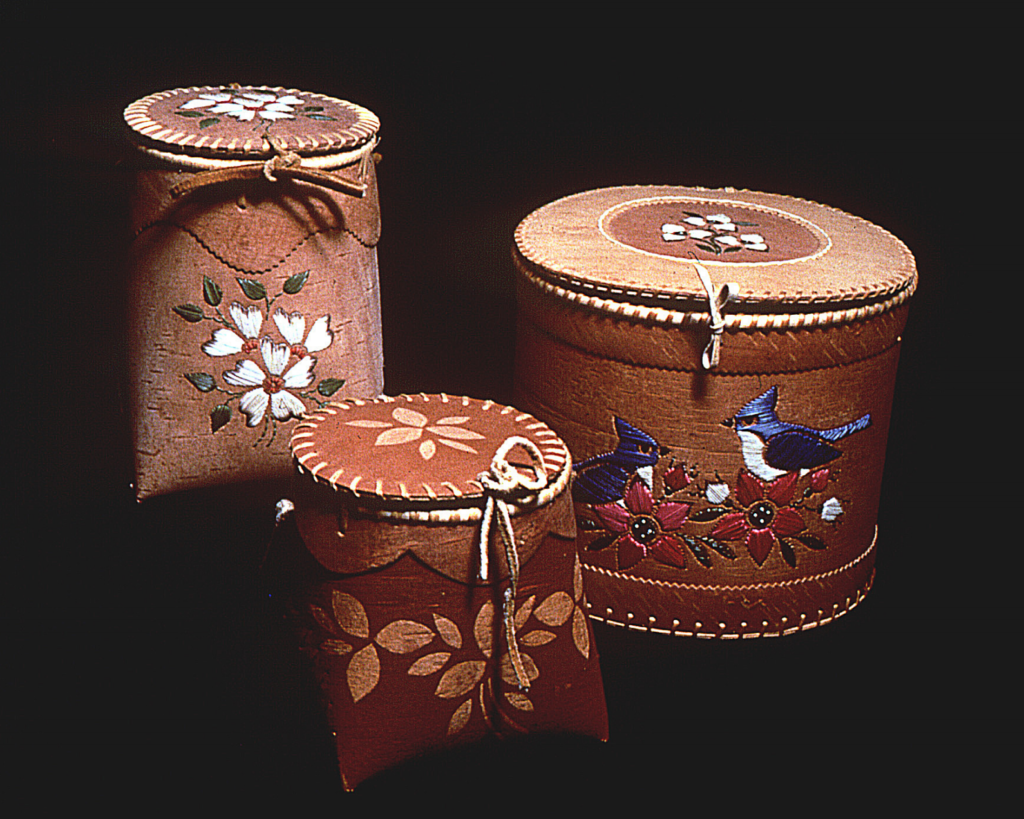
Medicinally, birch has many uses; high in anti-inflammatory methyl salicylate, it’s used as a powerful pain reliever. Both the leaves and branches can be used to treat sprains, strained muscles and headaches, and steaming the leaves can help clear sinus congestion. In the early spring, the buds of the birch can be infused in oil to make a topical salve for inflamed skin.
Birch trees can also be tapped for their sap to make syrup. Birch syrup is less potent than maple syrup, but delicious nonetheless and can be enjoyed in much the same way in sweetening baking or adding on top of a breakfast of pancakes.
Chaga, a parasitic fungus that grows on birch trees, is commonly found across the north. Renowned for its healing properties, chaga can be steeped into a tea that is believed to have many beneficial effects. If you’re interested in trying medicinal birch products for yourself, check out the selection at Aroma Borealis in Whitehorse.
Sources:
Alpine Plants of British Columbia, Alberta & Northwest North America by Pojar & MacKinnon
The Boreal Herbal by Beverley Gray
Natural and Cultural Guide to Naha Dehe, Nahanni National Park Reserve



